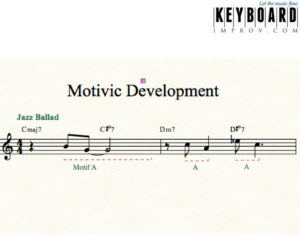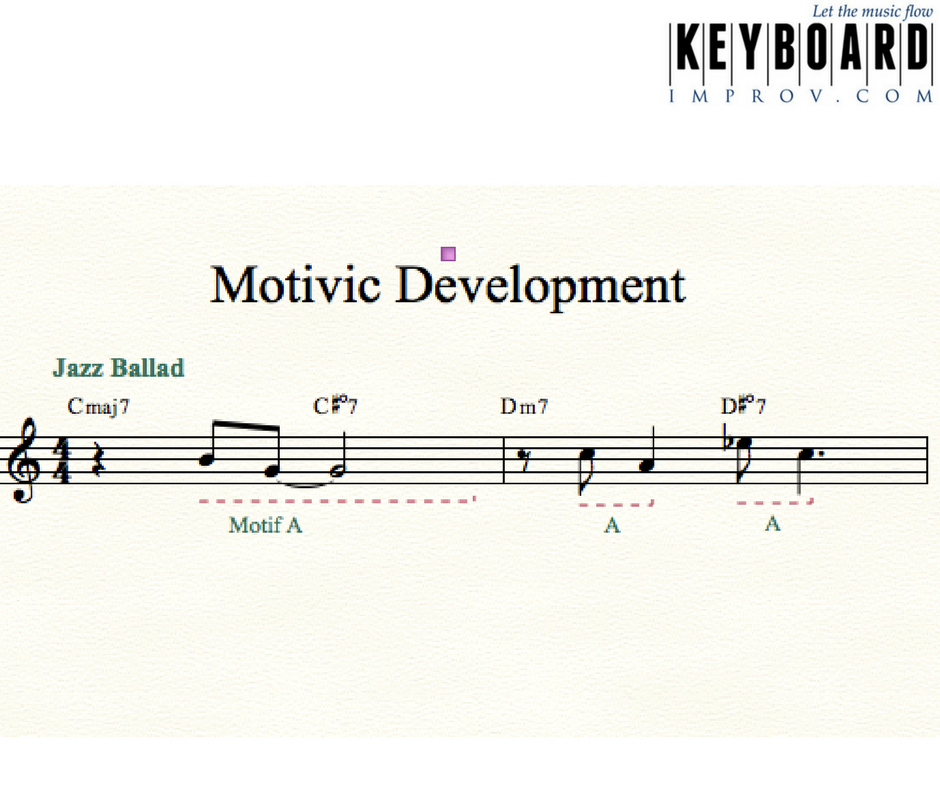
Have you ever listened to a great jazz ballad player like Keith Jarrett or Bill Evans, and wonder what they were doing that made them sound so great? Yes, they have a lot of musical sensitivity and a personal style, but what about specifics? What specific techniques do they use to sound so great?
Well, one thing that most if not all of the great jazz ballad players use is called “motivic development.” The term sounds a bit academic but the concept is simple. So simple, in fact, that you’ve known it your whole life though the songs you listen to and sing.
Imagine you’re at a friend’s birthday party and it’s time to bring out the cake and sing “Happy Birthday.” You join in and sing the first phrase: “Happy Birthday to you.” Then, to start the 2nd phrase, you sing the same thing again (“Happy Birthday”), only to go a little higher up the scale at the end of the phrase )”to you.” Sing it to yourself and experience the two phrases in terms of motifs.
Well, many of the great jazz ballad players do the same thing when they take their solos. They improvise a little phrase or short melodic idea, and then they repeat it, often with some variation. That short musical idea is called a “motif,” and when you repeat and vary your motifs, you get “motivic development.”
Play the music I’ve written at the top of this blog post to see how simple this is to do yourself. In fact, the motif I’ve used has only 2 notes! I’ve labelled this motif ‘A,’ and you can see that I’ve repeated it twice more, moving it around to fit the chords. I’ve also changed the rhythm each time for variety.
The chord progression I’ve used here is the beginning of the classic Rodgers and Hart song, “Bewitched, Bothered, and Bewildered.” You can find it in The Real Book, where it’s simply called “Bewitched.”
I’ve also made a short video to you how to do this at the piano. I was inspired to use “Bewitched” to demonstrate motivic soloing because the melody itself is based on motifs. Here’s the video:
Some jazz players use motifs to a great extent. In addition to Bill Evans and Keith Jarrett whom I’ve already mentioned, the great pianist Thelonious Monk organized most of his solos around motifs to a high degree. Other pianists, like Bud Powell, use them more sparingly.
Have fun applying this concept of using motifs to your own jazz ballad playing. It’s one of those things that can take your playing to a whole new level, and by using motifs in your soloing you’ll be joining a long, distinguished lineage of jazz pianists who have used this technique to create some of the most well-constructed and beautiful music ever played.
Have fun!
Learn the 5 Essential Left Hand Techniques with my free ebook: Left Hand Techniques for Jazz Piano
You’ll also get my weekly jazz newsletter with practice tips and inspiration

